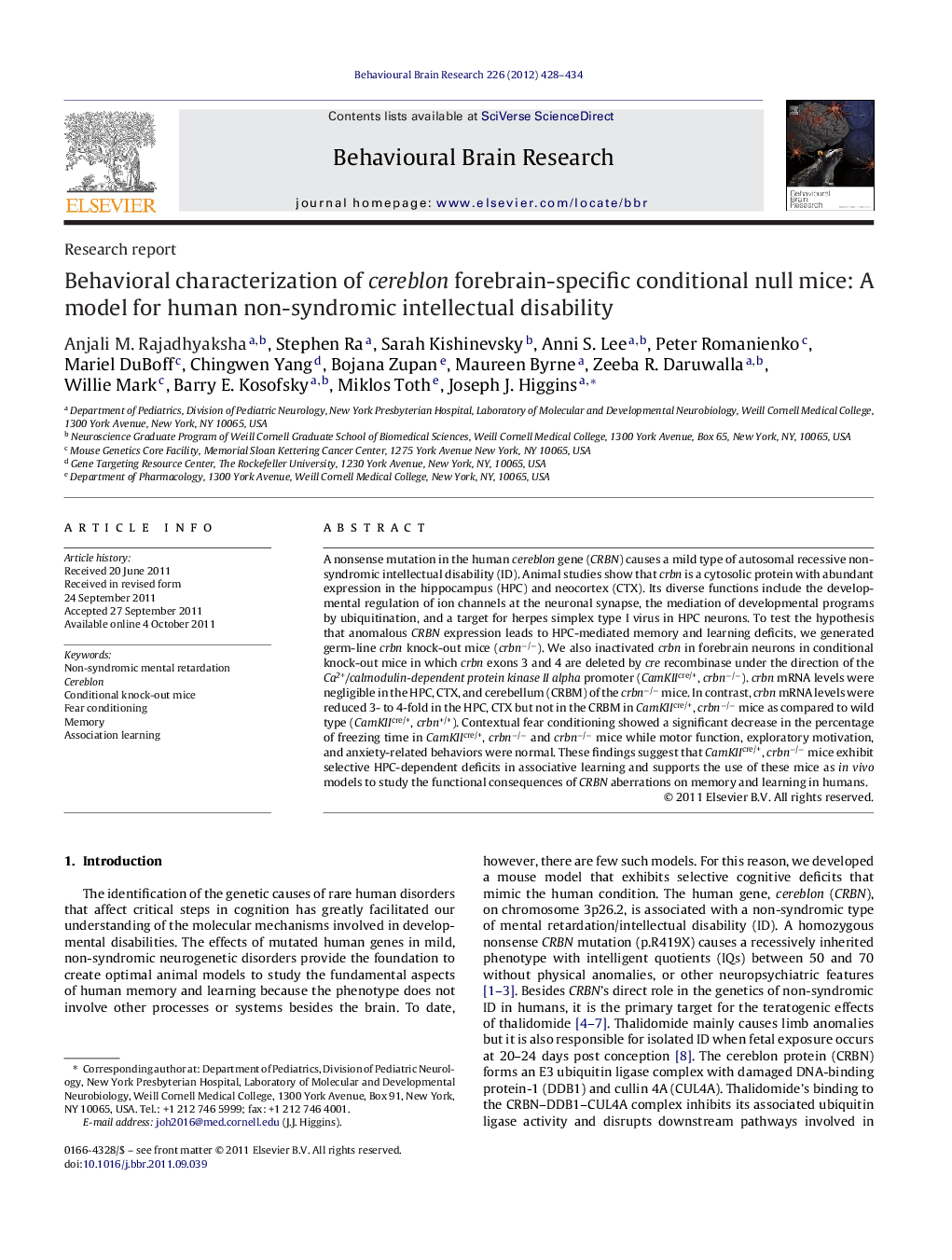| کد مقاله | کد نشریه | سال انتشار | مقاله انگلیسی | نسخه تمام متن |
|---|---|---|---|---|
| 4313613 | 1290002 | 2012 | 7 صفحه PDF | دانلود رایگان |

A nonsense mutation in the human cereblon gene (CRBN) causes a mild type of autosomal recessive non-syndromic intellectual disability (ID). Animal studies show that crbn is a cytosolic protein with abundant expression in the hippocampus (HPC) and neocortex (CTX). Its diverse functions include the developmental regulation of ion channels at the neuronal synapse, the mediation of developmental programs by ubiquitination, and a target for herpes simplex type I virus in HPC neurons. To test the hypothesis that anomalous CRBN expression leads to HPC-mediated memory and learning deficits, we generated germ-line crbn knock-out mice (crbn−/−). We also inactivated crbn in forebrain neurons in conditional knock-out mice in which crbn exons 3 and 4 are deleted by cre recombinase under the direction of the Ca2+/calmodulin-dependent protein kinase II alpha promoter (CamKIIcre/+, crbn−/−). crbn mRNA levels were negligible in the HPC, CTX, and cerebellum (CRBM) of the crbn−/− mice. In contrast, crbn mRNA levels were reduced 3- to 4-fold in the HPC, CTX but not in the CRBM in CamKIIcre/+, crbn−/− mice as compared to wild type (CamKIIcre/+, crbn+/+). Contextual fear conditioning showed a significant decrease in the percentage of freezing time in CamKIIcre/+, crbn−/− and crbn−/− mice while motor function, exploratory motivation, and anxiety-related behaviors were normal. These findings suggest that CamKIIcre/+, crbn−/− mice exhibit selective HPC-dependent deficits in associative learning and supports the use of these mice as in vivo models to study the functional consequences of CRBN aberrations on memory and learning in humans.
► We generated mutant mice with a forebrain-specific cereblon gene deletion.
► We examined the behavioral profile of these mutant mice.
► A decrease in cereblon mRNA expression was confined to the forebrain.
► The cereblon knock-out mice have deficits in fear conditioning.
► These mice model humans with a cereblon mutation and an intellectual disability.
Journal: Behavioural Brain Research - Volume 226, Issue 2, 15 January 2012, Pages 428–434